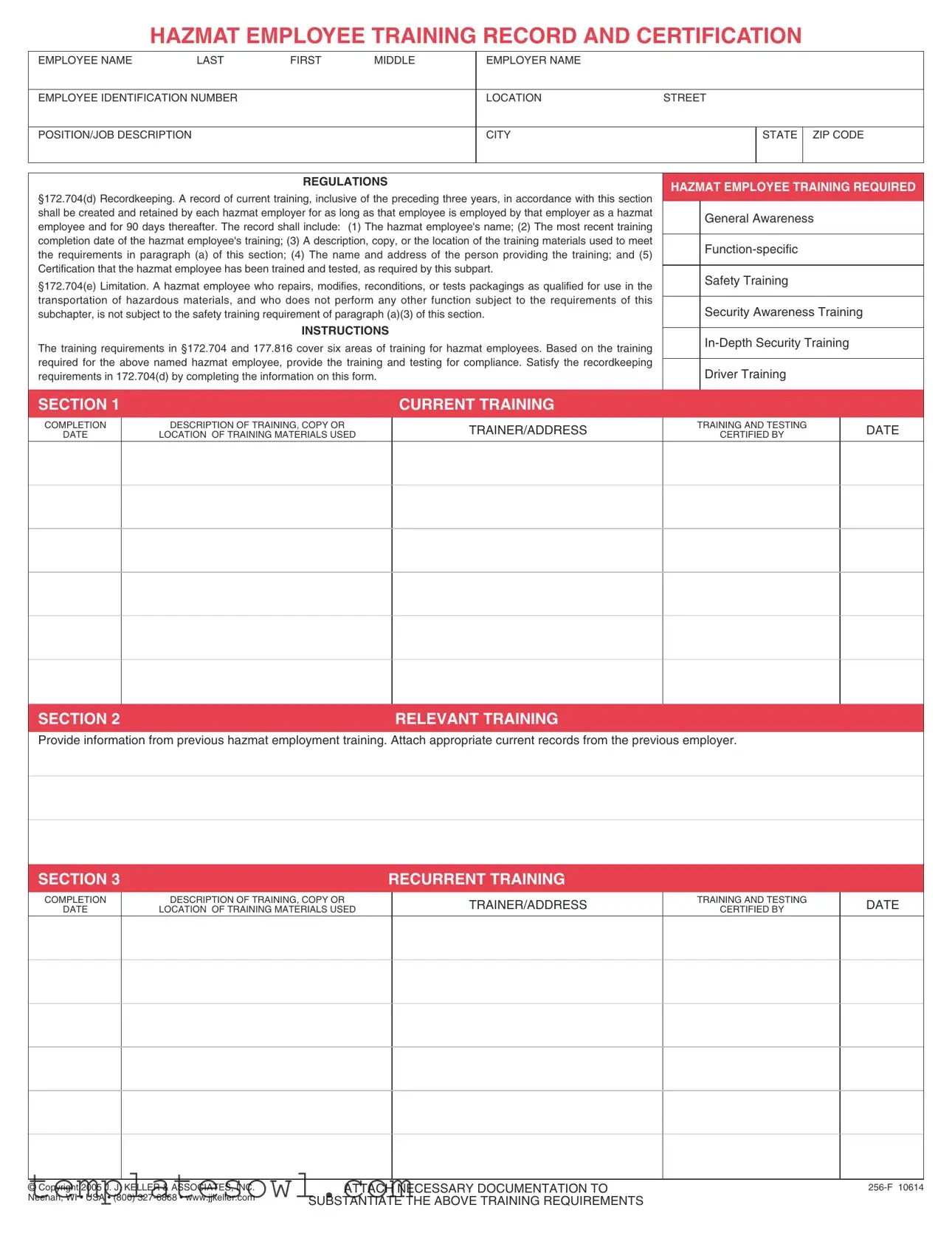What is the purpose of the Hazmat Employee Training Record form?
The Hazmat Employee Training Record form is designed to document the training received by employees involved in handling hazardous materials. This record ensures compliance with federal regulations and provides a clear history of the employee's qualifications and training achievements.
Who is required to complete this form?
All hazmat employers must complete the form for their employees who handle hazardous materials. This includes individuals in various roles that may involve the transportation, storage, or management of such materials.
What information must be included on the form?
The form requires several key pieces of information, including the employee's name, employer's name, training completion dates, a description of the training provided, and details about the trainer. Certification of training is also required to confirm the employee has been adequately trained and tested.
How long should training records be kept?
Records of training must be maintained for as long as the employee is employed in a hazmat position. Additionally, records should be kept for at least 90 days after the employee leaves the job.
What types of training are covered by the Hazmat Employee Training Record form?
The form encompasses various types of training, including general awareness, function-specific training, safety training, and security awareness training. Each of these areas is essential for ensuring safe and compliant handling of hazardous materials.
Is recurrent training necessary?
Yes, recurrent training is required to keep employees up to date with the latest safety protocols and regulatory changes. The form includes sections to report on recurrent training completion and its associated details.
Are there any exceptions to the safety training requirement?
Yes, there are exceptions outlined in the regulations. For instance, hazmat employees who perform specific tasks, such as repairing or testing packaging, may not need to complete certain safety training if they do not engage in other hazmat functions.
Can previous training records from former employers be included?
Yes, the form allows employers to supplement their records with relevant training information from previous employment. Attach those records to the form to maintain a comprehensive training history for the employee.
What happens if an employer fails to maintain these training records?
Failure to maintain training records can lead to significant penalties and legal consequences. Employers may be subjected to regulatory scrutiny and fines if they do not comply with recordkeeping requirements.
Where can I obtain a copy of the Hazmat Employee Training Record form?
This form is often available through various regulatory websites and from training providers. For convenience, you can also find it through organizations that specialize in hazmat compliance training.

